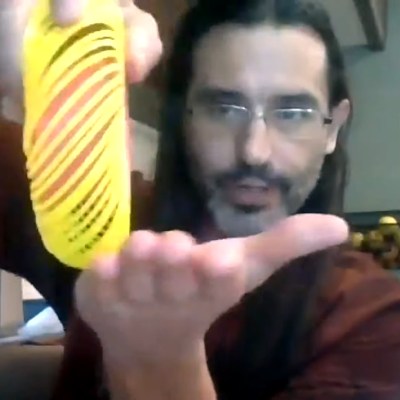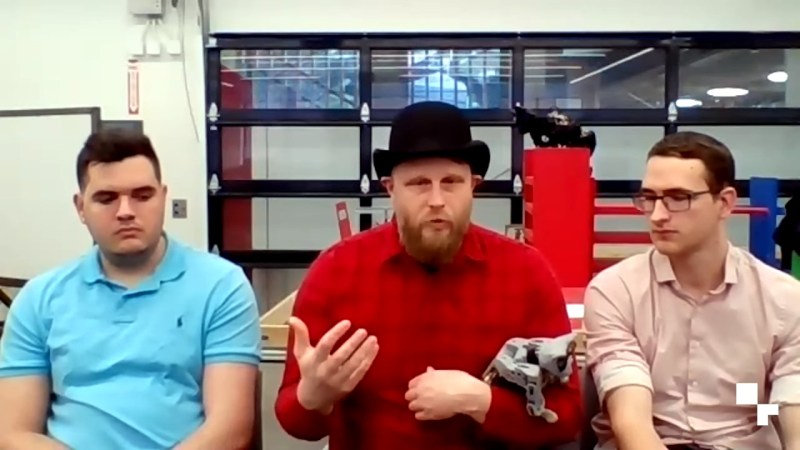This year we’ve added something new and exciting to the Hackaday Prize mix. Mentor sessions link up hardware teams with experts from backgrounds useful in moving their product development forward. We’ve assembled a dream team of mentors, and today we’re excited to publish video of the first mentor session which you’ll find embedded below. It’s a great chance to hear about the engineering going into each entry, and to learn from these back and forth conversations that help move the effort forward. We encourage you to sign up for an upcoming session!
Giovanni Salinas, the Product Development Engineer at Supplyframe’s DesignLab, is the mentor for this session. He has a huge breadth of experience in product development, and in today’s installment he’s working with four different product teams.
First up is Kevin Harrington (pictured above) who leads the team behind SmallKat, an adorable dynamics oriented robot cat. Dynamic-style walking is a hard problem for robots, and that is what the team is trying to solve. Their particular goal is to get around a chicken-and-egg problem by designing a hardware platform that can be used for deep research into the topic. Right now the team is trying to navigate issues around the jump to injection molding — when does it make the most sense to move away from 3D printing and take on the cost of tooling for the molds?
Yihui Xiong is working on a Smart Speaker for makers which he wants to be a completely open-source design. He currently makes the case from laser cut cardboard, which is identified as a potential weakness but also an opportunity for clever graphic design to make it a strength.
David Troetschel with Geometer, a 3D kit-based spatial design tool. It’s an interesting interlocking kit-of-parts concept with the aim of lowering the barrier to creating 3D shapes. His example is a chair; the skills required to build a chair are quite significant and slow to acquire. But equipped yourself with the primitives in his kit a chair and you can succeed with far less preparation. It becomes especially interesting when you understand that one of its targets is the ability to use it for molding patterns, making the effective transfer from prototype to mass production. The scale of the kit required is identified as an issue, and some tips are delivered on the subject of optimising injection molded plastic production.

Daren Schwenke is developing FilaMecanum, Mecanum wheels using 3D printer filament as a prototyping medium. Some suggestions are made as to better materials for a flexible platform that comes into contact with damp environments, as the PLA he’s used is hygroscopic. There is more discussion of injection molding, then some mention of another experimenter who is using nylon zip ties in his prototype of the same wheel.
Giovanni wraps up with a book recommendation, Rob Thompson’s Manufacturing processes for design professionals, which he describes as a complete product design materials class.
We have already recorded a few other mentoring sessions which you’ll see in the coming days, with many more planned. For those to be successful we need you to take part! Simply enter your project into the Hackaday Prize (if you haven’t already), and then sign up!



















Please be kind and respectful to help make the comments section excellent. (Comment Policy)